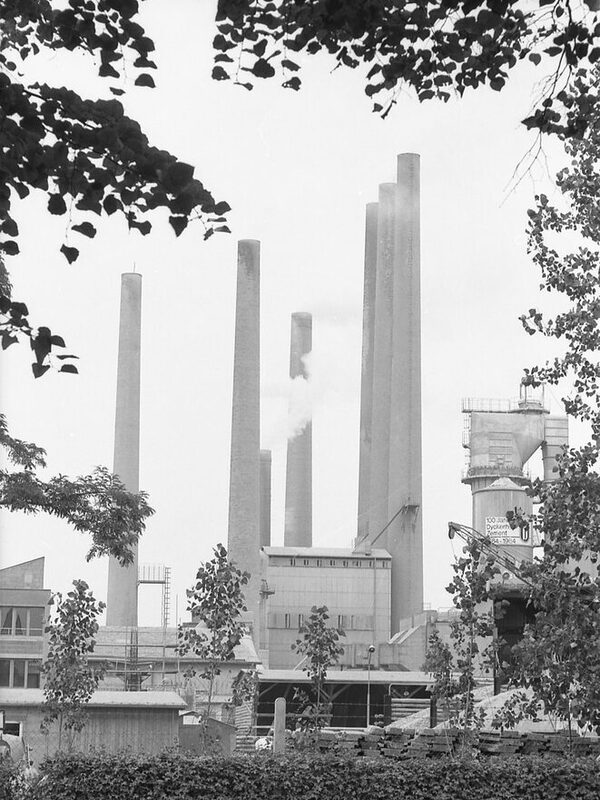Dyckerhoff GmbH
In 1864, Wilhelm Gustav Dyckerhoff and his sons founded a cement factory in Amöneburg. The workers obtained the lime required for cement production from the Biebrich quarry. The company quickly expanded and in 1886 supplied the cement for the Liberty Dam in New York. Today, the internationally active company is one of the leading manufacturers of cement and ready-mixed concrete.
The history of the Dyckerhoff Group began in the phase of increased German industrialization in the second half of the 19th century. On June 4, 1864, Wilhelm Gustav Dyckerhoff founded the "Portland-Cement-Fabrik Dyckerhoff & Söhne" in Amöneburg together with his sons Rudolf Dyckerhoff and Gustav Dyckerhoff. The clinker required for cement production was initially fired in a ring kiln. Extracting the necessary raw materials was a laborious business in those early days of the German cement industry: in quarries, workers had to use crowbars to break the rock loose by hand, which was then transported to the factory in wheelbarrows or horse-drawn carts. The Dyckerhoff family acquired the Biebrich quarry (Dyckerhoff quarry) in 1871 to expand its own raw material base. Gustav Dyckerhoff had discovered a lime marl deposit here that was suitable for cement production.
In 1883, around 500 people were already employed at the Wiesbaden cement works. The clinker was now fired in four ring kilns. Three years later, the company received one of the largest orders of the time from the USA: Dyckerhoff supplied 8,000 wooden barrels of cement for the foundations of the Statue of Liberty in New York. By the turn of the year 1899/1900, 1,200 workers were already employed. In 1908, the construction of today's factory began. The ring kilns for firing the clinker were gradually replaced by more modern rotary kilns.
The merger with Wicking AG took place in 1931 and Dyckerhoff was temporarily called "Portland-Zementwerke Dyckerhoff-Wicking AG". In the same year, a product innovation that is still important today was launched on the market: the white Portland cement "Dyckerhoff Weiss". From 1949, Dyckerhoff was the first building materials manufacturer to transport cement to construction sites in special silo trucks and store it there in silos. In 1959, the company, now under the name "Dyckerhoff Zementwerke AG", was the first to use the next innovative process: Dry kilns with heat exchangers. At the same time, Dyckerhoff began producing ready-mixed concrete. To further expand ready-mixed concrete activities, "Dyckerhoff Transportbeton GmbH" was founded in 1979.
From the end of the 1980s, internationalization was increasingly driven forward. Milestones were the market entry in the USA in 1988 and the expansion into East Germany and Eastern Europe after the fall of the border with the former GDR. Even when the company was founded, Wilhelm Gustav Dyckerhoff and his sons were very concerned about the welfare of the workforce. They founded a "workers' sick fund", into which the workforce had to pay one kreuzer from every guilder earned. In return, members were granted medical assistance and medicines in the event of illness and a cash benefit if they were unable to work. The wives of the company founders looked after the welfare of the employees' families. A domestic school for the daughters of the employees(Amöneburg Domestic School) and a "boys' nursery" were founded. Many of the workers lived with their families in one of the numerous company apartments that were built around the plant in Amöneburg. Today, Dyckerhoff is one of the leading manufacturers of cement and ready-mixed concrete in Germany. The head office is still located next to the main plant, directly on the Rhine in the Wiesbaden district of Amöneburg. The Group has been part of the Italian Buzzi Unicem Group since 2004. It consists of Dyckerhoff GmbH, which operates in Germany, and its Group companies in Luxembourg, the Netherlands, Poland, the Czech and Slovak Republics, Ukraine, Russia and the USA. Approximately 6,000 people are employed worldwide, around 1,800 of them in Germany. The company's 150-year history is reflected in the many buildings that have been constructed worldwide using Dyckerhoff cement.

